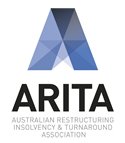The Australian Restructuring Insolvency & Turnaround Association (ARITA) and The Minister for Revenue and Financial Services, the Hon Kelly O’Dwyer MP, announced on 23 August 2016 that many of the changes to insolvency law that were to be implemented under the Insolvency Law Reform Act 2016 have been postponed from March 2017 to September 2017.
ARITA Announcement

IPs get more time to prepare for Insolvency Law Reform Act
In a major win by ARITA, the Minister for Revenue and Financial Services has agreed to delay the commencement of a portion of the Insolvency Law Reform Act (ILRA).
This decision will avoid the situation where the profession simply would not have enough time to become compliant with the Act by the scheduled commencement date of 1 March 2017.
We understand that while Parts 1 and 2 of the two new Insolvency Practice Schedules (for Corporations and Bankruptcy) will still commence on 1 March 2017, these parts of the legislation are largely concerned with registration and discipline, and can be easily implemented by the profession.
The Minister has agreed to delay Part 3 of the new Insolvency Practice Schedules which relate to the general rules for the conduct of external administrations and bankruptcies. These provisions will not commence until 1 September 2017.
We also understand that parts of Schedule 3 of the ILRA (very specific provisions dealing with matters such as termination of a DOCA and the relation back day) will also still commence on 1 March 2017.
The Government’s caretaker period during the lengthy election stopped all work on the all-important Insolvency Practice Rules, which is likely to push out their formalisation until December 2016.
This would have meant there was no way firms could adjust their IT systems or complete the necessary extensive staff retraining before the scheduled commencement. This extension simply provides a more reasonable time period for compliance.
These issues were first flagged with Government, agencies and regulators by ARITA prior to the election, and have been the subject of sustained action on our part to drive for a more acceptable commencement time frame.
Minister’s Announcement

The Minister for Revenue and Financial Services, the Hon Kelly O’Dwyer MP today announced that the industry is being given more time to implement the Insolvency Law Reform Act 2016 reforms.
This major reform will increase confidence in Australia’s insolvency regime by:
- improving practitioner registration and disciplinary processes;
- providing new regulatory powers to ASIC;
- increasing practitioner insurance requirements;
- introducing new review and audit processes; and
- addressing conflicted remuneration and ensuring that offences and penalties are appropriate and proportionate.
“The reforms also ensure that our insolvency processes are modern and efficient – reducing costs, improving timeliness of administrations and improving returns to creditors,” Minister O’Dwyer said.
“Most importantly, the changes will enhance the ability of creditors to terminate underperforming practitioners.
“Given the scale of these reforms industry is being given time to upskill and to update their software systems and business processes before commencement.
“The reforms to insolvency administration processes, to enhance efficiency, improve communication and increase competition, are now scheduled to commence on 1 September 2017.
“We will not defer commencement of those reforms directed at promoting competency and professionalism in the insolvency industry. The practitioner registration and discipline provisions, and enhancements to the ASIC’s powers will commence on 1 March 2017, as planned.
“The Insolvency Law Reform Act represents the Government’s first tranche of insolvency reforms, directed at improving the integrity and efficiency of Australia’s insolvency laws.
“The Government’s second tranche of insolvency reforms will enhance business rescue and support entrepreneurship, and are being progressed as part of the Government’s National Innovation and Science Agenda,” Minister O’Dwyer said.
END OF POST


 The following table sets out the proposed legislation by using extracts from the Bill and related official material.
The following table sets out the proposed legislation by using extracts from the Bill and related official material.